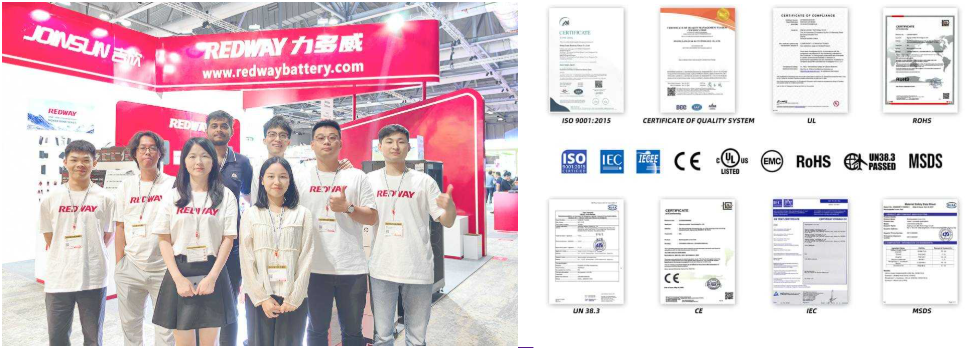What does battery discharge mean? Battery discharge refers to the process where a battery releases stored electrical energy to power a device. This occurs when electrons flow from the anode to the cathode through an external circuit. Over-discharging can degrade battery lifespan, reduce capacity, and cause irreversible chemical changes. Managing discharge cycles is critical for optimizing performance in smartphones, EVs, and renewable energy systems.
Can a 200W Solar Panel Run a Refrigerator?
How Does the Battery Discharge Process Work?
Battery discharge involves electrochemical reactions that convert chemical energy into electrical energy. Lithium-ion batteries, for example, discharge as lithium ions move from the anode to the cathode through an electrolyte. This flow generates current until the ion reservoir depletes. Depth of Discharge (DoD), temperature, and load demand directly influence efficiency. Modern Battery Management Systems (BMS) regulate discharge rates to prevent cell damage.
Wholesale lithium golf cart batteries with 10-year life? Check here.
The discharge curve varies between chemistries – lithium-ion maintains steady voltage until ~20% capacity, while lead-acid shows linear voltage decline. Phase changes in electrode materials (e.g., lithium iron phosphate cathodes) create characteristic voltage plateaus. Engineers use coulomb counting and Kalman filters to estimate State of Charge (SoC) during discharge cycles. Recent advancements include self-healing electrodes that repair micro-cracks during partial discharges.
What Factors Accelerate Battery Discharge Rates?
High ambient temperatures, excessive power draws (e.g., gaming or fast charging), and aging cells amplify discharge rates. Chemical degradation, such as SEI layer growth in Li-ion batteries, reduces usable capacity over time. Parasitic loads from background apps or GPS services also contribute. Manufacturers often design batteries with a 20-80% DoD sweet spot to minimize stress and prolong cycle life.
Want OEM lithium forklift batteries at wholesale prices? Check here.
Conductive additives like carbon nanotubes can lower internal resistance, enabling faster discharge without overheating. However, rapid discharge (>2C rate) in cold environments (<0°C) risks lithium plating on graphite anodes. A 2023 MIT study revealed that pulsed discharging (5-second bursts) extends Li-ion cycle life by 18% compared to continuous drain under high loads.
Golf Cart License Requirements in Michigan
| Battery Type | Optimal Discharge Rate | Critical Voltage |
|---|---|---|
| Li-ion (Cobalt) | 1C | 2.8V |
| LiFePO4 | 2C | 2.0V |
| Lead-Acid | 0.2C | 1.75V |
Why Does Over-Discharging Damage Battery Health?
Over-discharging pushes battery voltage below safe thresholds (e.g., <2.5V for Li-ion), causing copper shunts to form and creating internal short circuits. This leads to capacity fade, increased internal resistance, and thermal runaway risks. Some chemistries, like lead-acid, suffer sulfation when discharged beyond 50%, crystallizing sulfate particles and blocking active material regeneration.
How Can You Monitor and Control Battery Discharge?
Use BMS tools or apps like AccuBattery to track voltage, current, and state of charge (SoC). Implement charge controllers in solar systems to disconnect loads at low voltages. For EVs, regenerative braking recovers kinetic energy during deceleration, offsetting discharge. Avoid draining batteries below 20% and store them at 40-60% charge if unused for extended periods.
“Modern batteries demand precision in discharge management. At Redway, we’ve observed that pairing adaptive BMS algorithms with hybrid cathode materials (e.g., NMC-LTO composites) can extend cycle life by 300% in high-drain applications. Future innovations like AI-driven load forecasting will revolutionize how devices optimize energy use in real time.”
— Senior Engineer, Redway Power Solutions
FAQs
- How do I check my battery’s discharge rate?
- Use a multimeter to measure voltage under load or install diagnostic apps (e.g., Ampere for Android). Advanced BMS provides real-time current (mA) and power (W) metrics.
- Can a discharged battery be revived?
- Partially. Lead-acid batteries respond to desulfation chargers. Li-ion cells below 1.5V are often unrecoverable due to copper corrosion. Always consult manufacturer guidelines.
- What prevents over-discharge in EVs?
- EVs use multilayer protection: BMS cutoff at 5-10% SoC, HV contactor disengagement, and driver warnings. Thermal sensors trigger failsafes if voltage anomalies occur.





